Apollo and Daphne Sculpture by Gian Lorenzo Bernini
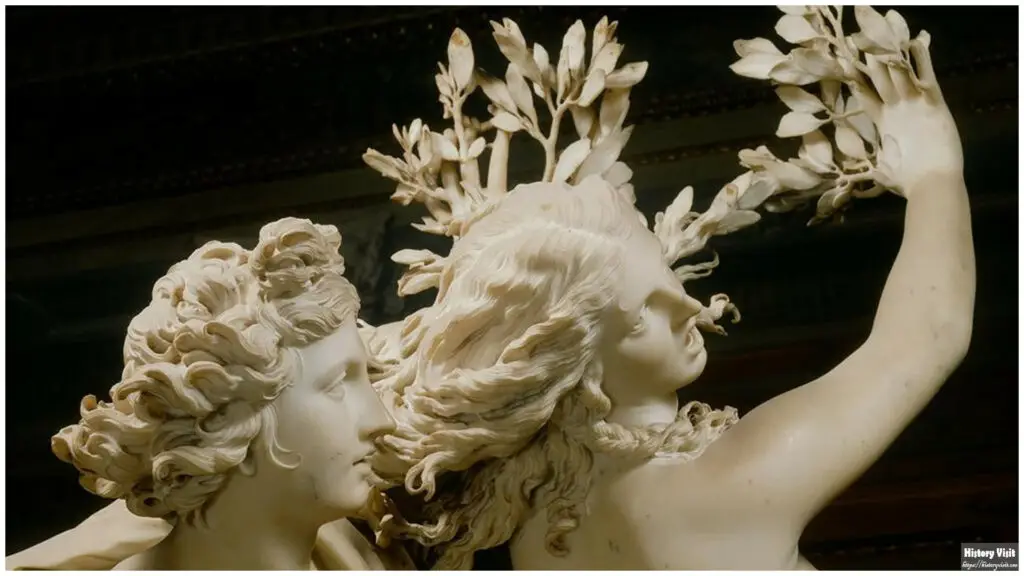
Introduction
The Apollo and Daphne sculpture by Gian Lorenzo Bernini is a Baroque marvel. Created in 1622–1625, it captures intense movement and emotion. This Apollo and Daphne masterpiece is displayed in Rome’s Galleria Borghese.
The work tells a myth from Ovid’s Metamorphoses. Apollo falls in love with Daphne. She flees him in fear. At the moment of capture, she turns into a laurel tree.
This article will explore Bernini’s skill, the myth’s meaning, and the sculpture’s legacy. The Apollo and Daphne is more than art. It is a vision of love, loss, and divine intervention.
Gian Lorenzo Bernini: Sculpting Genius
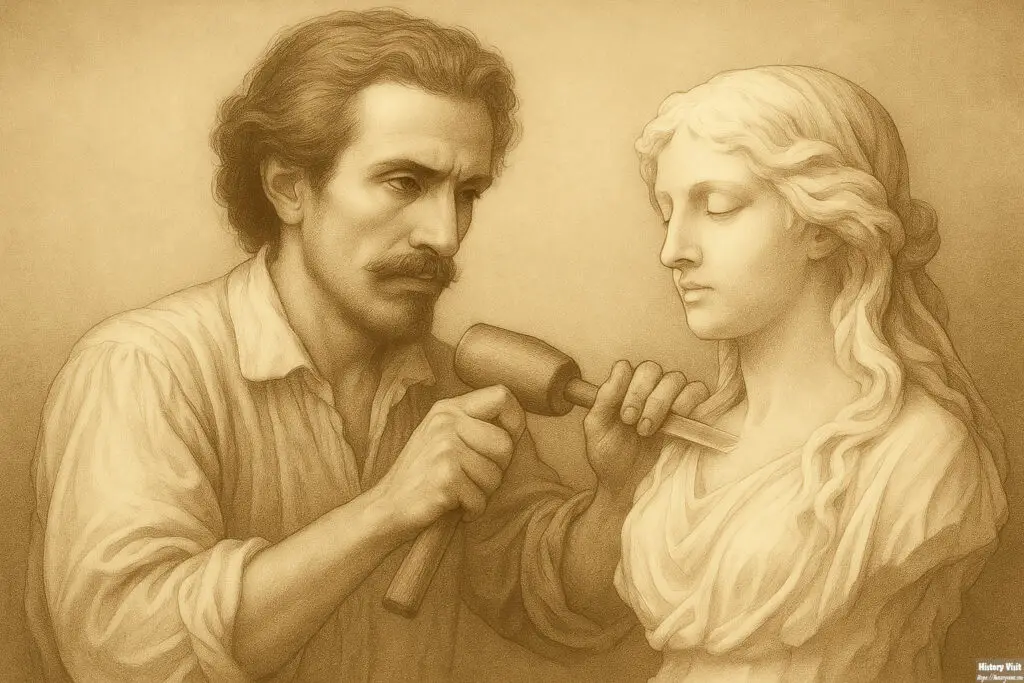
Gian Lorenzo Bernini was born in Naples in 1598. His father was a sculptor too. Bernini learned marble craft from childhood.
The family moved to Rome. There, Bernini studied ancient statues. He admired Michelangelo’s power and skill.
By his twenties, Bernini had developed his own style. It was full of drama and motion. He wanted to make marble feel alive.
The Apollo and Daphne shows Bernini at his best. He turned hard stone into living flesh and bark.
The Myth of Apollo and Daphne
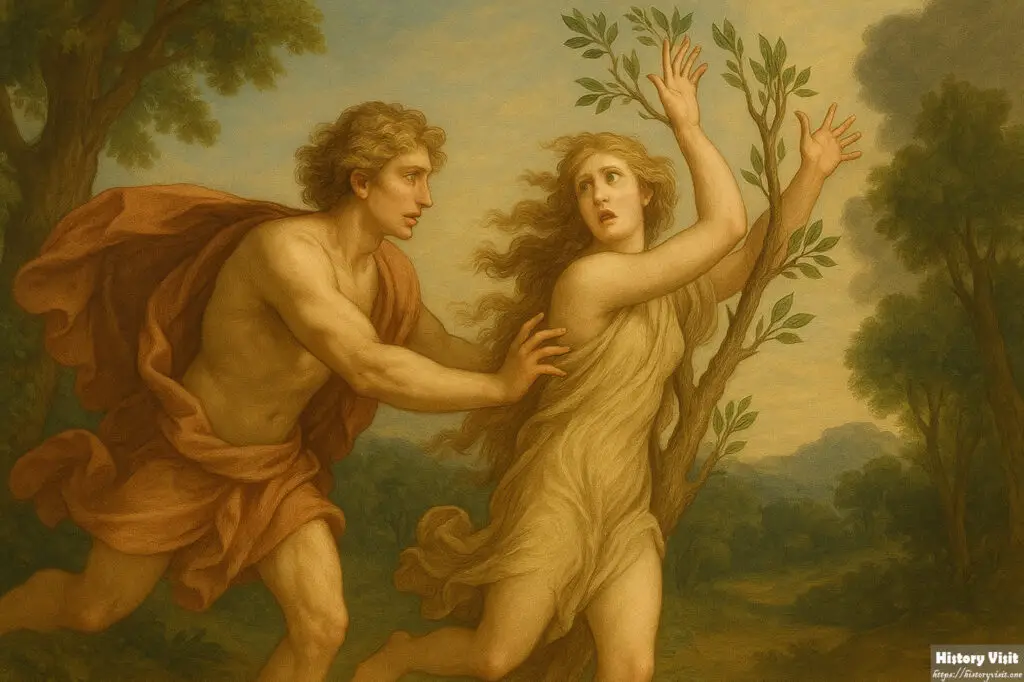
The story comes from Ovid’s Metamorphoses. Apollo insulted Eros, the god of love. Eros took revenge.
He shot Apollo with a golden arrow. Apollo burned with love for Daphne. But Eros shot Daphne with a lead arrow. She hated Apollo.
Daphne ran from Apollo’s passion. Just as he reached her, she called for help. Her father, a river god, saved her.
He turned her into a laurel tree. Apollo was left in grief, honoring her as sacred.
Bernini’s Interpretation of Apollo and Daphne
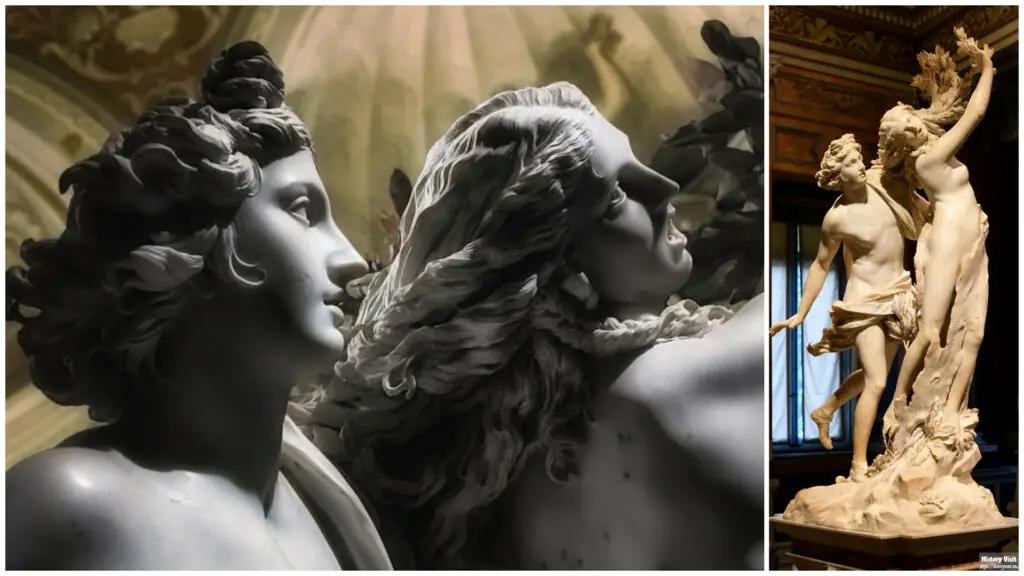
Bernini chose to sculpt the climax of the story. Daphne is mid-transformation.
Her hands sprout leaves. Her toes root to the ground. Apollo’s face shows desire and shock.
The details are stunning. You see hair turning to branches. Fingers twisting into foliage.
The marble seems to move. Bernini caught the exact moment of change. It is breathtaking.
Symbolism in Apollo and Daphne
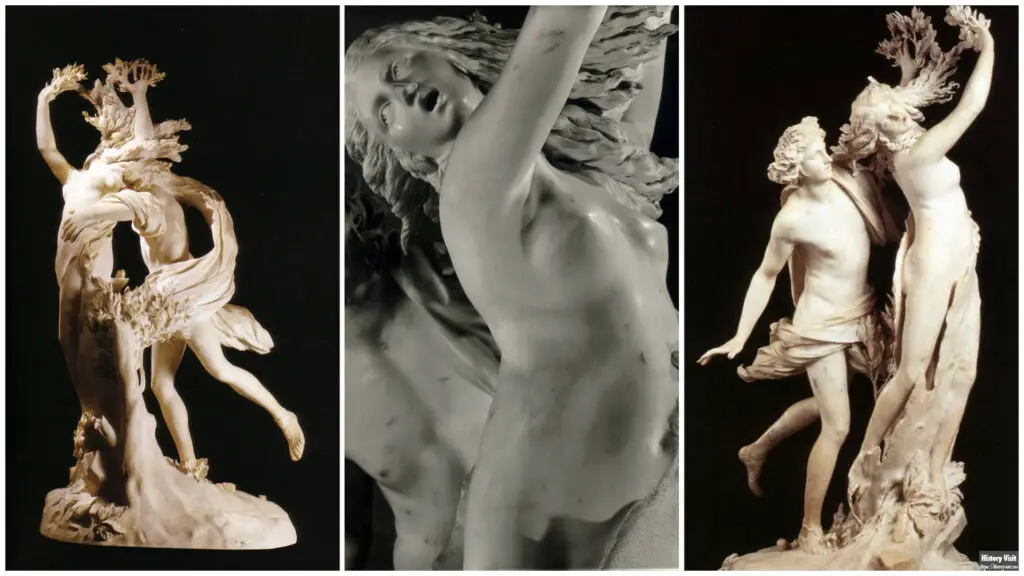
The sculpture speaks of desire and escape. Apollo represents burning love. Daphne shows purity and fear.
Their bodies twist together. But they will never be joined. Love and rejection meet.
Bernini carved this tension perfectly. You can feel Apollo’s longing. You sense Daphne’s terror.
The laurel tree also became Apollo’s symbol. It showed that even the god of light could lose.
Techniques and Mastery in Marble
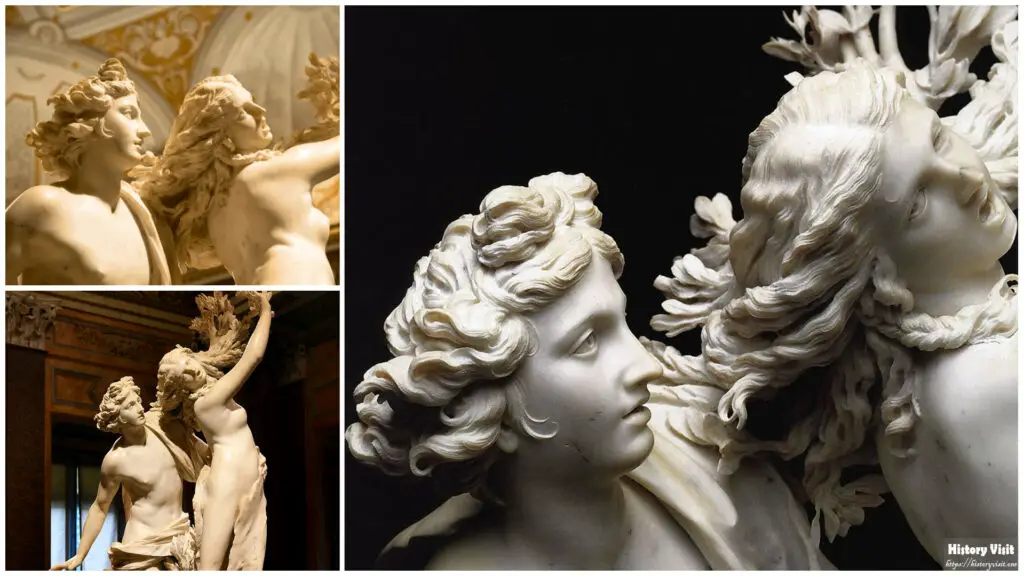
Bernini’s skill with marble was unmatched. He made hard stone look soft and moving.
Apollo’s muscles look real. Daphne’s hair seems to fly. Even the bark feels delicate.
Bernini used light and shadow for magic. Details catch the eye from every side.
The sculpture was carved from a single block. Bernini planned every inch. It is a triumph of design.
Baroque Art and Apollo and Daphne
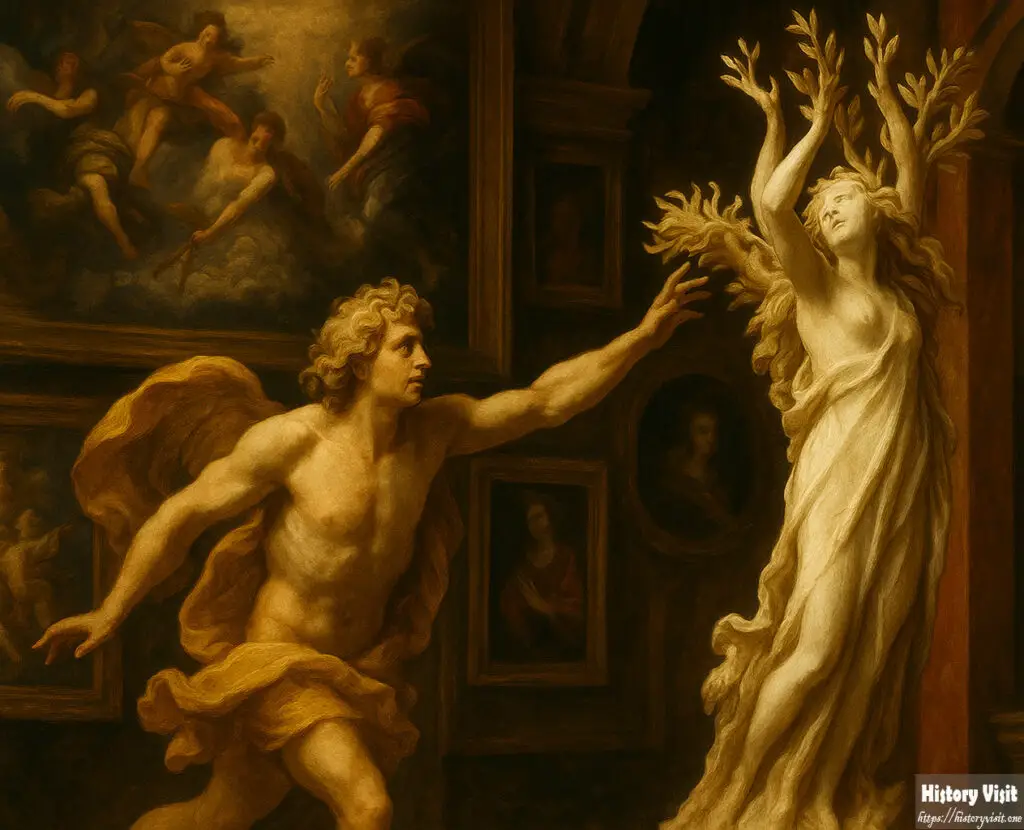
Baroque art loved action and emotion. The Apollo and Daphne shows both.
It has drama, motion, and shock. You cannot look away from it.
The twisting forms create a spiral of energy. Bernini leads your eye through the story.
He made myth feel real. That was the Baroque goal drama and truth in stone.
Patronage and Borghese’s Vision
Cardinal Scipione Borghese commissioned this piece. He loved powerful myths.
Owning a Bernini showed taste and power. It impressed visitors.
Borghese displayed it proudly in his villa. People came from across Europe to see it.
The Apollo and Daphne was proof of Roman art’s greatness. It became a legend.
The Emotional Impact of Apollo and Daphne
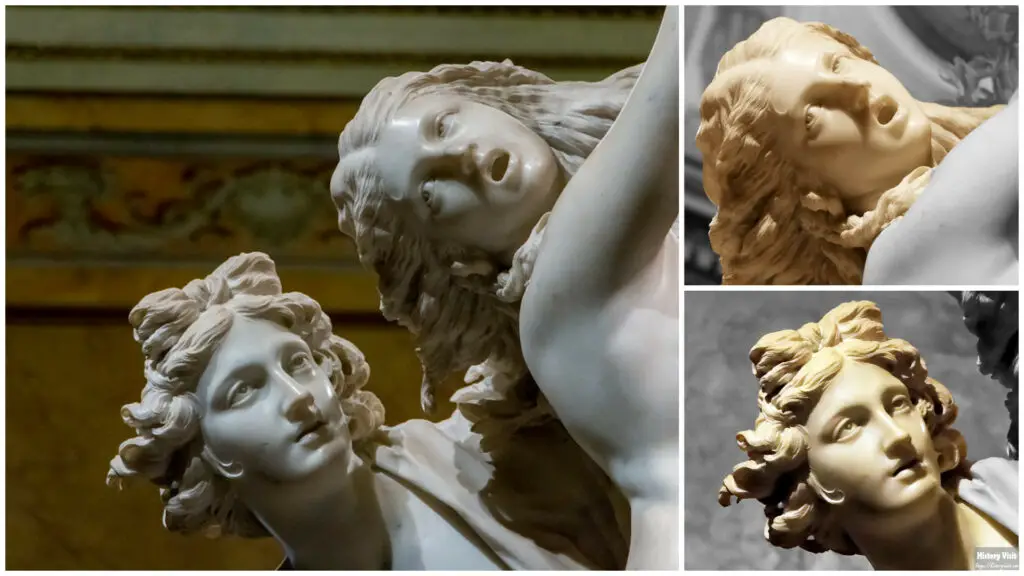
Visitors still gasp when they see the sculpture. It feels alive.
They see Apollo’s heartbreak. They feel Daphne’s desperation. Bernini makes you believe the marble breathes.
Art historians praise its perfection. Viewers feel its power even today.
Each angle shows new wonders. The sculpture never grows old.
Preservation of Apollo and Daphne
The sculpture has been carefully protected. Galleria Borghese controls light and dust.
People cannot touch the marble. It stays clean and white.
Restorers check its health often. Small repairs keep it safe.
This care means future generations can also enjoy its glory.
Apollo and Daphne in Modern Culture
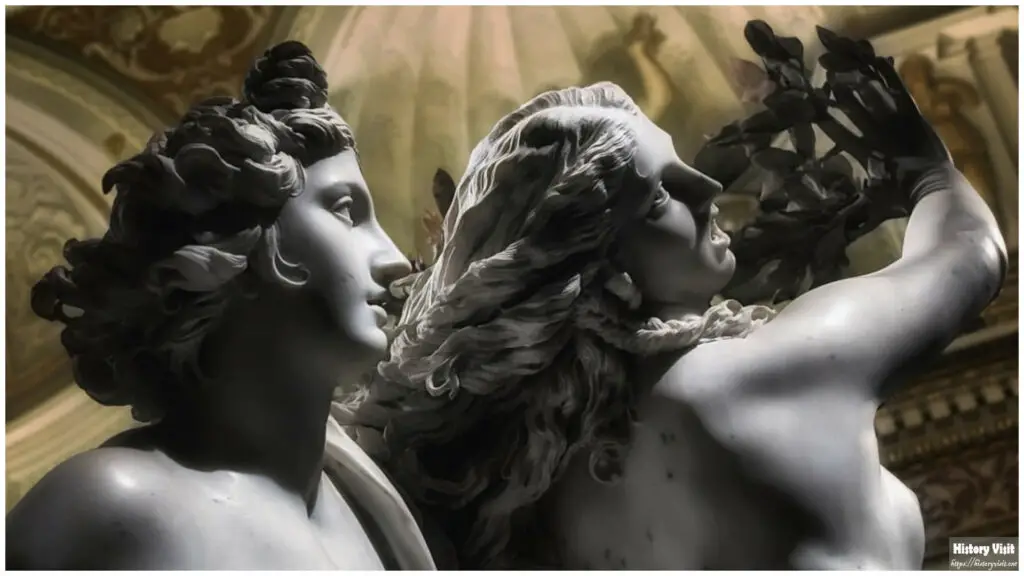
The sculpture inspires artists today. Painters, writers, and even dancers study it.
Movies and TV have copied its style. Video games also borrow its energy.
Teachers use it to explain myth. Students learn from its beauty.
Bernini’s message still lives on. The sculpture is never forgotten.
Comparison with Bernini’s Other Works
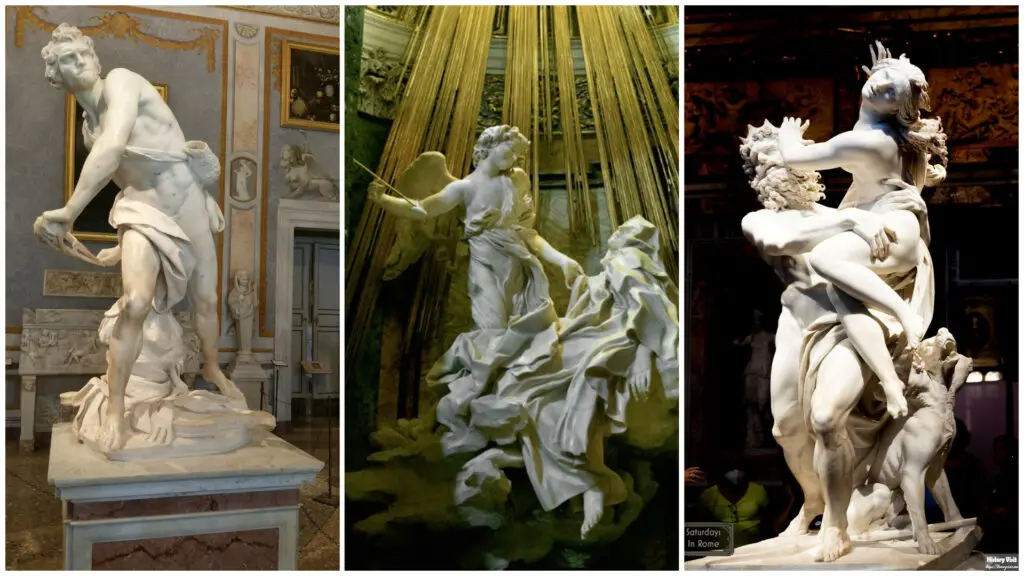
Bernini made many great pieces. His David is bold and fierce.
But Apollo and Daphne feels more poetic. It is delicate yet strong.
The Ecstasy of Saint Teresa shows another divine moment. But Apollo and Daphne stays rooted in myth.
It stands as Bernini’s best mythological scene. It is unforgettable.
The Myth’s Deeper Meanings
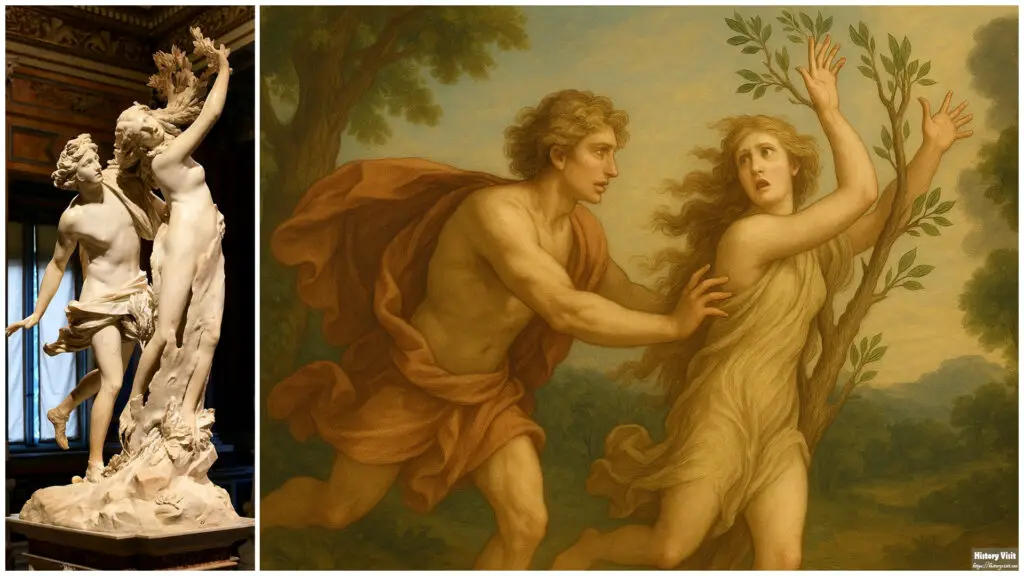
People debate the story’s message. Is Apollo a victim of love?
Was Daphne free after changing to a tree? Or did she lose herself?
Bernini does not answer. He only shows the moment. That makes it powerful.
We see love, fear, and magic all at once.
Apollo and Daphne and Gender Views
Some say the story warns women about men’s desire. Others see Daphne’s power.
She escapes Apollo’s touch, even at great cost. Her freedom means everything.
Apollo is left alone, defeated. His passion turned to worship.
Bernini invites us to think about power and choice.
Apollo and Daphne as Timeless Art
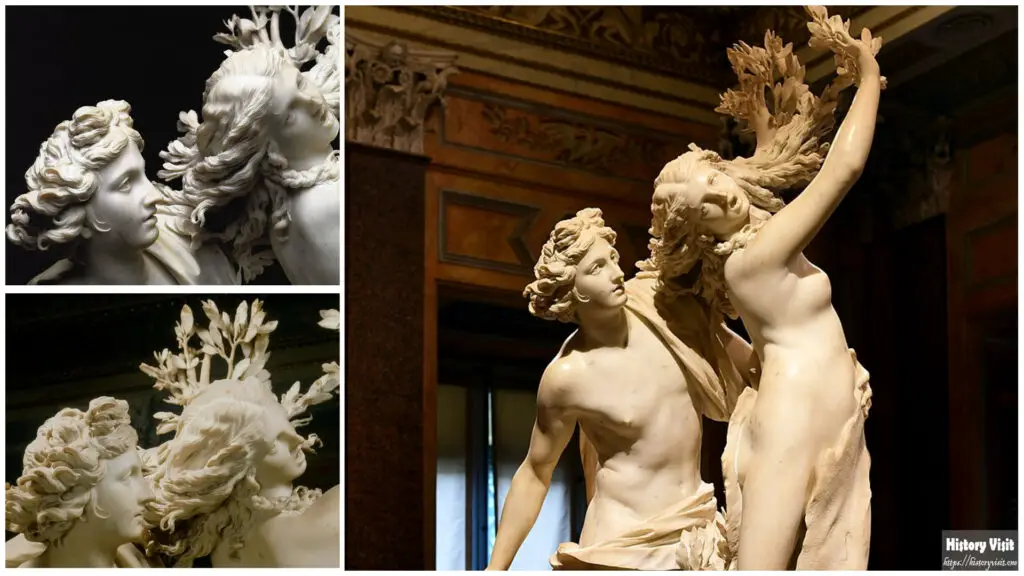
No one forgets this sculpture. Tourists stand in wonder.
Photographs cannot show its true life. You must see it for real.
Every year, thousands visit just to admire it. Its legend grows stronger.
Bernini’s genius gave marble a human soul.
The Future of Apollo and Daphne
The sculpture will stay protected. Museums will share its story.
Technology may scan it for research. Digital models can teach people worldwide.
But seeing it in Rome will remain special. No screen can replace that magic.
Its future is as bright as its past.
Conclusion
The Apollo and Daphne sculpture is a masterpiece of Baroque art. Bernini showed myth like no other.
The figures still move hearts centuries later. They teach us about love, loss, and beauty.
This marble legend will keep inspiring forever. Bernini’s gift to the world is truly timeless.


